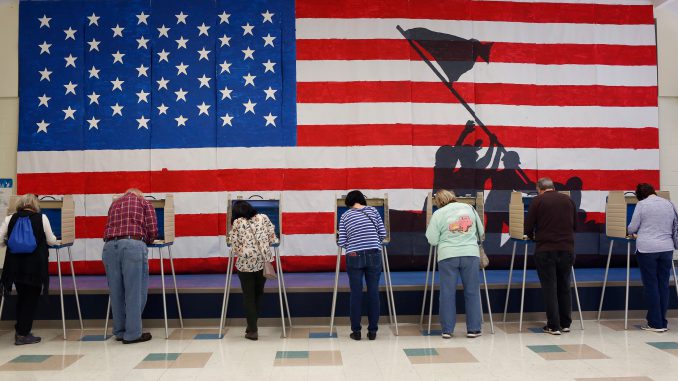
Assessing Polling in the United States of America…How Safe is Your Vote?
The Constitution of the United States gives the states the power to handle polling (voting) in accordance with the Constitution. But, how does each state handle polling? And, how do Americans determine how safe their vote is and whether some claims about voting are true or not?
The United States has some basic compliance laws for polling/voting. The federal government established an independent commission and programs to assist each state to assure safe polling. In addition, the United States tasks federal departments with providing cybersecurity and other assistance, guidance and monitoring to further safeguard voting in the United States.
But…How does a concerned citizen determine the safety of polling in the United States of America? How does it all work? The Founding Project condensed information about voting with links to the most current information as of this publishing date. With accurate information directly from the involved sources, citizens can determine the safety of voting in America for themselves.
Each State
For detailed information on individual states polling laws, each state has their own websites with their laws and voting process. Every state requires voter registration, some type of proof of identity, and valid signatures on ballots. Most also have signature matching of some type, along with other varying measures. The complete process for each state, including ballot transport, handling, security, testing and monitoring processes are all in accordance with national and the state’s own requirements. This article offers the information based on federal guides and laws with information per state where necessary.
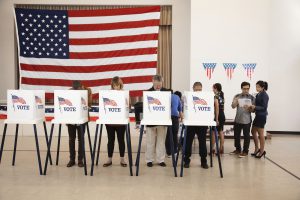
The 2000 election prompted updates as found in The Help America Vote Act, which added requirements for all state. Every state has the obligation to meet those requirements and the right to do so in the manner each state deems best for their citizens.
The Basics on Voting Systems
The U. S. Election Assistance Commission (EAC) provides Voluntary Voting System Guidelines (VVSG) and works with the National Institute of Standards and Technology (NIST) to provide detailed technical guidelines to help states meet federal and their own polling laws. The Technical Guidelines Development Committee (TGDC) provides guideline review for system technology as a service for states.
Prior to the establishment of the EAC, the National Association of State Election Directors (NASED) certified voting systems according to standards developed by the Federal Election Commission (FEC). Some states still refer to valid measures from these entities.
Every state’s voting system must go through a testing process to assure state standards and federal standards are met for the system to be used. States can test their systems using testing by the federal government, by the state or by the system vendor prior to selling or a combination. A few states have their own testing systems or rely upon state universities to conduct testing of voting equipment. Regardless of which testing is used, every testing system is required to be accredited by the U.S. Election Assistance Commission (EAC).
Poll Monitoring…the Poll Watchers
All parts of the polling process are manned by volunteers. And, all parts of the polling process are also monitored by teams of poll watchers, both nonpartisan election officials and also representatives of all involved Parties. The election officials go through extensive training to learn all aspects of polling, so they are aware of what needs to happen and all polling procedure requirements. Poll monitors representing the involved Parties are offered training, but not all choose to be trained. Election officials at each polling location also familiarize the monitor teams with the locations and process.
Systems Testing
The testing systems include cybersecurity, equipment testing and user error testing among other criteria.
Detailed information about the polling systems used by each state, the guidelines to which states adhere, the rigorous testing required, the cyber and technical safety measures taken, the poll monitoring by cameras and election officials, identity assurances and audit procedures is all available to the public.
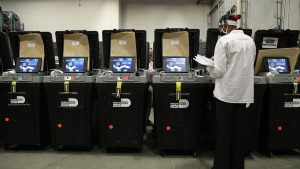
The involvement of numerous testing, security and guideline entities to assure safe polling in the United States seems involved, but the measures are linked to one another and supported by legislation passed by the U.S. Congress. Each state then adapts their process and standards following these strict requirements and guidelines.
More on Testing
The National Conference of State Legislatures offers a one-stop page with links to numerous sources of criteria and requirements for polling in the United States. This link offers “Voting System Standards and Certification” information: https://www.ncsl.org/research/elections-and-campaigns/voting-system-standards-testing-and-certification.aspx
The U.S. Election Assistance Commission is an independent, bipartisan commission established to assure polling safety in the United States. They adopted the Voluntary Voting System Guidelines and also accredits polling testing systems and certifies voting systems. They also maintain the national mail voter registration form, which was developed with the National Voter Registration Act of 1993 (links below). The EAC’s four commissional are appointed by the president and confirmed by the U.S. Senate. https://www.eac.gov/about-the-useac
The “Help America Vote Act of 2002”
The Help America Vote Act (HAVA) of 2002 was passed by the United States Congress to help reform the voting process and established additional requirements for each state’s process. HAVA includes the addition of provisional voting, statewide voter registration data bases and voter identification procedures, which EVERY state has. Also, HAVA established a Standards Board and Board of Advisors (links for both provided below) for the EAC and established the Technical Guidelines Development Committee (link below). The EAC has public meetings and hearings to inform the public about its progress and activities. Information about the act: https://www.eac.gov/about_the_eac/help_america_vote_act.aspx
Besides all voting systems going through accrediting and certification by each state, prior to EACH election, all voting systems are function and safety tested again for accurate function in the United States.
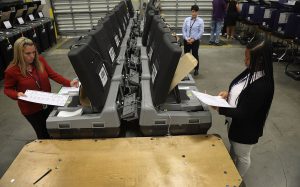
Along with testing the equipment, polling function and security of equipment, the chain of custody, physical security and potential for tampering is also reviewed and tested. This page offers the information about that advance testing, ballot reconciliations and voter registration security: https://www.ncsl.org/research/elections-and-campaigns/election-security-state-policies.aspx
About Voter Identification
All 50 states require a valid signature for in-person voting and also for absentee/mail-in ballot voting to be counted. In addition, some require a witness to the signature or a notarized signature for mail-in and absentee ballots. Most states have advanced signature-matching methods utilized for a ballot to be counted.
Ballotpedia offers a page with information about signature requirements for absentee/mail-in ballot polling and ballot collection laws: https://ballotpedia.org/How_do_states_protect_and_verify_absentee/mail-in_ballots%3F_(2020)
For in-person voting, most states require an ID (identification card) or they require an ID for a first-time vote, relying on signature matching for subsequent voting, and a requirement to show an ID, if the voter hasn’t voted in four year. Only 11 states have no ID requirement, but have signature requirements and signature-matching criteria and one state keeps documentation of each voters’ appearance in lieu of ID. All 50 states comply with federal voter identity standards. https://ballotpedia.org/How_do_election_workers_match_signatures%3F_(2020)
Voter identification requirements for the United States to which all states comply with information about each state voter identification requirements instead of using an ID: https://www.ncsl.org/research/elections-and-campaigns/voter-verification-without-id-documents.aspx
Are Dead People Voting?
Some complained loudly about voter fraud involving people voting in the name of a deceased person. These complaints have been prevalent for many years. But, the actual data around this problem is compelling. The National Voter Registration Act of 1993 (link below) engaged more aggressive measures for maintaining voter registration lists. Some states are still working toward complete and accurate compliance with all standards, but human error plays a solid role in some of the problems, rumors and confusion.
The Heritage Foundation, described as a conservative think-tank and research organization, did an extensive study of voter fraud in America. Their voter fraud database, kept since 1997, noted a total count of 19 (nineteen) cases of voter fraud involving someone fraudulently voting for a deceased person from 1997 to 2019 in the United States. That’s 19 total fraudulent votes cast in the name of deceased people in all of the United States in over two decades of voting. (The 202o report is not yet available.) The Heritage Foundation also notes that voter fraud in the United States is rare, caught and prosecuted and amounts to less than 2000 votes per election cycle or not enough to affect outcome.
But, There’s This…
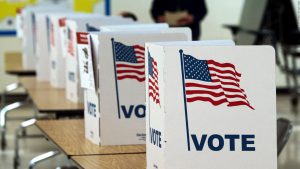
The Pew Center on the States did a commissioned study released in 2012 stating that over a million people dead people were still on voter registration lists. It is estimated that this number has been significantly reduced on voter registration lists in the United States, as more accurate measures and technology are used to remove the deceased from those lists. With an eligible voting population of just over 239M (million) and 206M of them registered to vote in 2020, 1M is a small percentage. Despite that number, remember the total count of voter fraud involving the deceased was still below 20 incidents for 23 elections.
Granted, that study was from 2012 and much has been done to maintain those lists since then, but, due to the amount of time it takes to conduct these studies, another report is not yet available. BUT, one also has to counter their findings with the human error of reports of deaths of those, who are actually quite alive.
Example: In 2007, an investigative report was conducted on 100 alleged votes attributed to dead people. Of those 100, ALL of them were found to be VALID votes by living citizens and human error was involved in matching mistakes, a problem with underlying data, or clerical errors by poll workers.
Technology Brings Improvements
According to the National Conference of State Legislatures, “In most states, election officials receive information on deceased voters from the state department of vital statistics, the state department of health, or another agency that handles death records. In some states officials may also gather this information from other sources, such as obituary notices, copies of death certificates, and notification from a close relative.” Additionally, every state has laws regarding the validity of votes cast by people who died after their ballot was cast but before Election Day…a very specific maintenance control that is now possible with advanced technology.
Information on voting by the deceased: https://ballotpedia.org/Votes_cast_in_the_names_of_deceased_people
In-depth information on each state’s maintenance of voter registration lists or election governance: https://ballotpedia.org/Voting_policies_in_the_United_States#Election_governance_by_state
Additional checks to maintain voter registrations lists: https://www.ncsl.org/research/elections-and-campaigns/voter-list-accuracy.aspx
Technology Also Brings the Spread of Conspiracies about Polling
The Cybersecurity & Infrastructure Security Agency offers Rumor Control to provide accurate information about polling in the United States. Following the 2020 election, the following rumor control report was published on their website: https://www.cisa.gov/rumorcontrol
An important aspect of deciding whether information about polling (or any other topic) is factual is considering the credibility of a source. Thousands of scam websites exist. Thousands of propaganda websites, pretending to be news outlets, exist. Just as many con artists are on YouTube and social media offering conspiracies. Conspiracy theories are a big business in the United States. The easy money it makes encourages con artists and operators to blatantly lie to the public. Information to help with your own assessment of sources: https://www.cisa.gov/sites/default/files/publications/19_1115_cisa_nrmc-Question-the-Source_1.pdf.
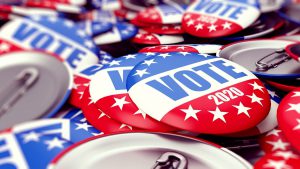
(For information about how easily conspiracy theories start and flourish, see The Founding Project article, The Anatomy of a Conspiracy Theory: https://thefoundingproject.com/anatomy-conspiracy-theory/)
A Quick Video Review of Polling Security from the EAC:
This video offers a quick, overall view of the security involved with polling process in the United States: https://www.youtube.com/watch?v=wbXO5821SIw&feature=youtu.be
Some of Those Details about Polling
The guidelines for states as offered by the EAC in accordance with HAVA is the Voluntary Voting System Guidelines information and actives: https://www.eac.gov/voting-equipment/voluntary-voting-system-guidelines
State Requirements for voting system testing and certification: https://www.eac.gov/sites/default/files/TestingCertification/State_Requirements_for_Certification09042020.pdf
Besides the testing, assessments and guidelines, polling is also monitored by cameras and by human monitors from involved parties and by election officials. National Poll Workers Recruitment information: https://www.eac.gov/help-america-vote
Information about The Technical Guidelines Development Committee: https://www.eac.gov/about_the_eac/technical_guidelines_development_committee
The National Institute of Standards and Technology: https://www.nist.gov/itl/voting
A full copy of The National Voter Registration Act: https://www.eac.gov/voters/national-voter-registration-act
Voting System Certification Process information: https://www.eac.gov/voting-equipment/system-certification-process
Did you know that many polling stations offered a live stream camera, so citizens could watch the polling process? This was reported by several outlets, including this one, for the 2020 election: https://qz.com/1926439/how-to-watch-2020-election-ballots-being-counted/
While assessing polling in the United States, a quick look at campaign finances is a good idea, too. The Federal Election Commission enforces federal campaign finance laws, including monitoring donation prohibitions and limits and also oversees funding for presidential campaigns. https://www.fec.gov
Now, You Decide…
The Founding Project is a nonprofit dedicated to civics education and civic duty. The patriotic duty of every American to know the laws and process of polling in the United States helps citizens fulfill their Constitutional role to manage their government. This article provides information to assess the polling process. With this information, Americans can decide for themselves, based on accurate information directly from the involved sources, the safety of polling in the United States.


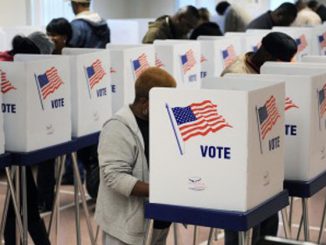
Leave a Reply